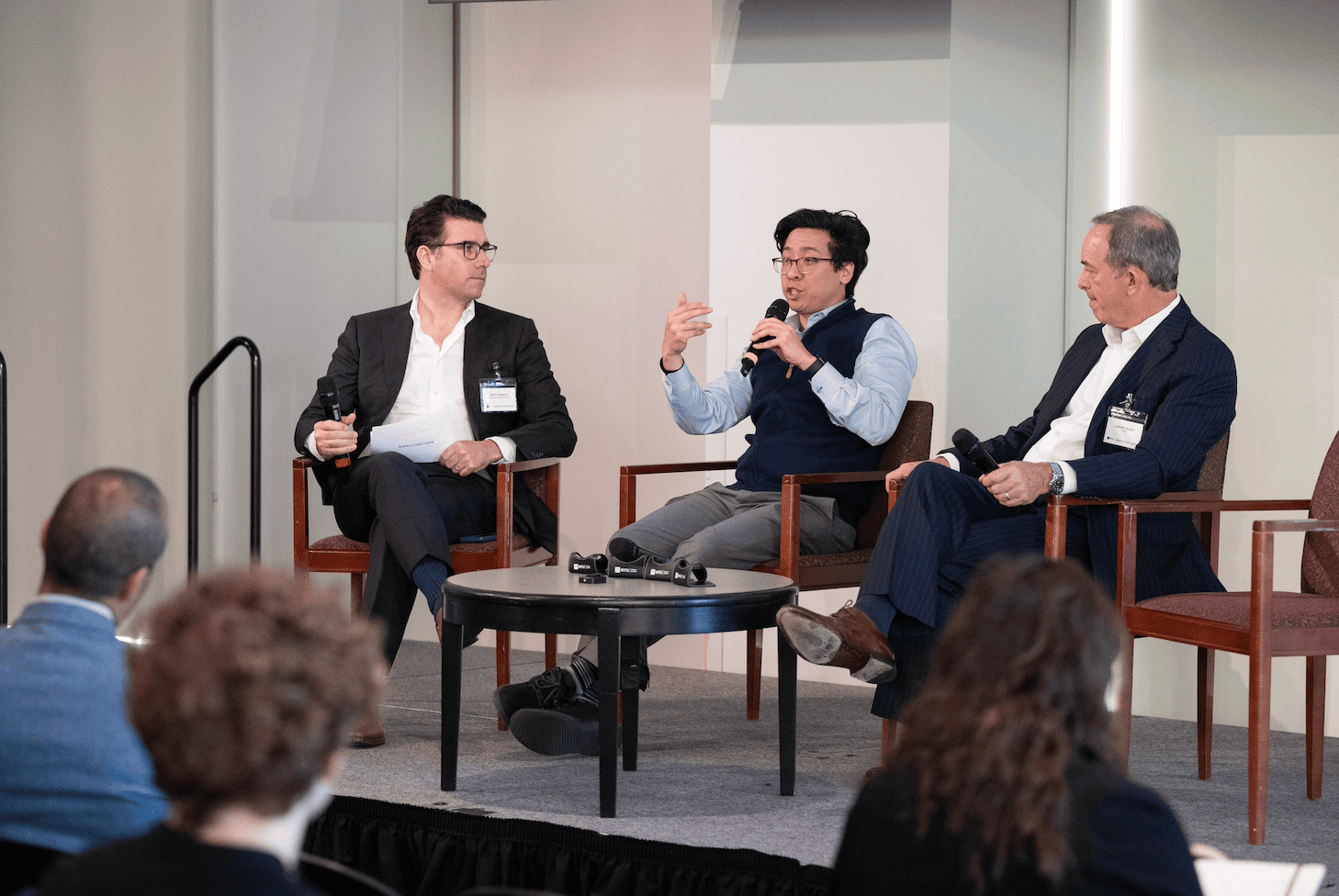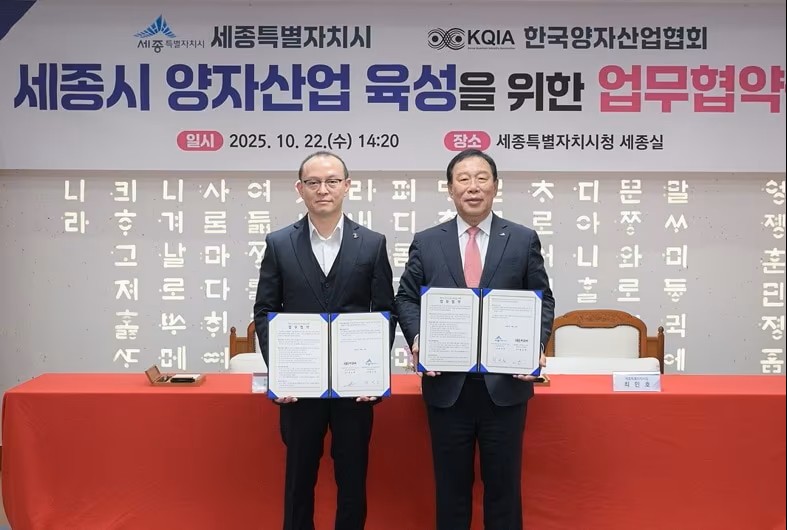Insider Brief
- New York University announced the creation of the NYU Quantum Institute to advance research and innovation across quantum computing, communication and sensing technologies.
- The institute, led by physicist Javad Shabani, will unite researchers from multiple disciplines to accelerate practical applications and commercialization of quantum science.
- The launch follows growing industry collaboration, including Qunnect’s deployment of entanglement-based quantum networks in New York City in partnership with NYU.
- Image: Matt Cimaglia, Jerry Chow and Lamont Silves at New York University in New York on Oct. 21, 2025. The event, “Quantum Conversations: From Fundamentals to Futures,” was co-hosted by Quantum Coast Capital and NYU. (Creighton/Courtesy of NYU Photo Bureau)
New York University has announced the creation of the NYU Quantum Institute, a move designed to position the university as a major player in the growing field of quantum technology, according to a news release from the university. The announcement, made during the “Quantum Conversations: From Fundamentals to Futures” event co-hosted by Quantum Coast Capital and NYU, reflects the momentum behind quantum research and its transition from theory to practical application.
Juan de Pablo, NYU’s Executive Vice President for Global Science and Technology and Executive Dean of the Tandon School of Engineering, said that the new institute is part of NYU’s broader effort to lead in next-generation computing and materials research. According to the presentation, the initiative marks a turning point similar to the dawn of the internet era, when early academic research laid the groundwork for today’s digital infrastructure. The new institute will unite scientists and engineers across disciplines to accelerate scientific work in quantum computing, communication and sensing technologies.
“Quantum information sciences and engineering have the potential to revolutionize a wide range of industries,” de Pablo said in the statement. “However, realizing their promise requires moving beyond fragmented collaboration to an integrated ecosystem that can translate discoveries into deployable systems. That is what the Quantum Institute aims to do.”

The institute will be housed at 770 Broadway, a 1,000,000 sq. ft. facility that NYU recently secured, according to NYU. The university reported that just this year, it hired six new researchers in the field of quantum information science across multiple departments and recently launched an MS in Quantum Science and Technology. NYU is now one of fewer than 20 institutions in the US to offer a degree tailored to students seeking careers in quantum industries, according to the release.
Practical Applications Begin to Emerge
The event gathered experts from major quantum companies — including IBM, IonQ, Qunnect and Q-Cat — who outlined how quantum computing is already being used to solve problems that challenge traditional computers. Unlike classical systems that rely on binary code, quantum processors use quantum bits, or qubits, that can represent multiple probabilistic states at once. This ability allows quantum systems to perform complex calculations faster and with greater energy efficiency.
Session leaders told the audience that quantum technology is no longer confined to laboratory experiments. It is now being used in areas such as molecular simulation, where quantum computers can model the structure and behavior of molecules with unprecedented accuracy. That capability has immediate implications for drug discovery, materials science and climate research — industries where predictive modeling and optimization play a critical role.
The presenters also emphasized that quantum computing consumes far less energy than classical supercomputing. That energy efficiency could become a key advantage as global industries face increasing pressure to meet sustainability goals. In addition, advances in quantum networking and sensing are already improving fields such as cybersecurity, navigation, and medical imaging.
One of the evening’s most tangible examples of progress came from Qunnect, a New York–based company that has partnered with NYU to deploy entanglement-based quantum communication networks using existing fiber infrastructure. The networks, operating between Manhattan and Brooklyn, represent one of the first metro-scale quantum links in the United States. Such systems will form the foundation of future “quantum internet” capabilities, enabling ultra-secure communication.
Building a Collaborative Future
Leading the NYU Quantum Institute will be Professor Javad Shabani, a physicist known for his research in quantum materials and superconducting devices. His appointment is in line with the institute’s emphasis on cross-disciplinary collaboration. According to NYU Tandon, the institute will bring together experts in physics, engineering, materials science, computer science, biology, chemistry and medicine — an integration of experts in critical quantum use cases who will focus on turning quantum principles into usable technologies.
Shabani added in the release: “Quantum computing has the potential to bring fundamentally new understanding and solutions to problems in both physical and life sciences. From the building blocks of life to complex financial analysis, quantum technology stands to redefine what is possible. The NYUQI will create a world-leading quantum ecosystem that radically improves the quantum computing landscape and creates societal impact.”
The institute’s formation reflects a broader understanding that the next phase of quantum progress depends on uniting fundamental science with real-world engineering. NYU researchers plan to use the institute as a hub for training future scientists and developing partnerships with industry and government to accelerate the commercialization of quantum innovations.
Researchers acknowledged that significant challenges remain. Quantum systems are highly sensitive to environmental noise, which can cause errors in calculations. Stabilizing qubits and scaling up quantum processors to handle meaningful workloads continue to be among the field’s toughest obstacles. Developing the talent pipeline needed to support the growing industry will also require long-term investment in education and infrastructure.















